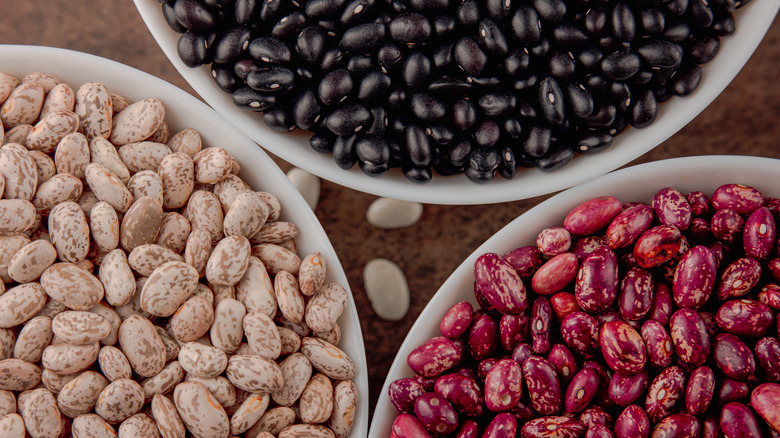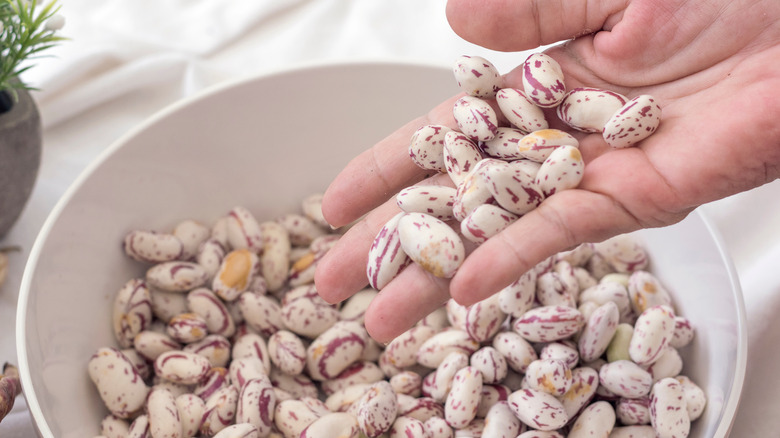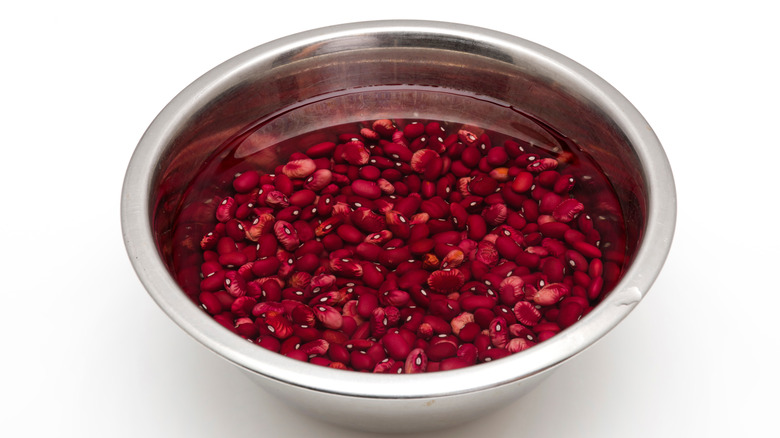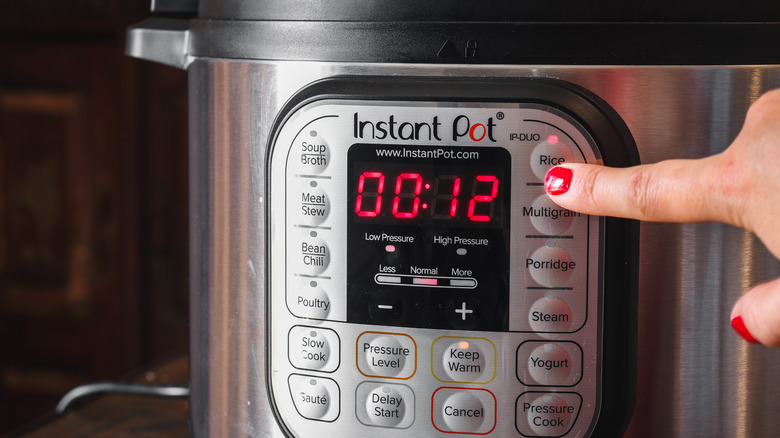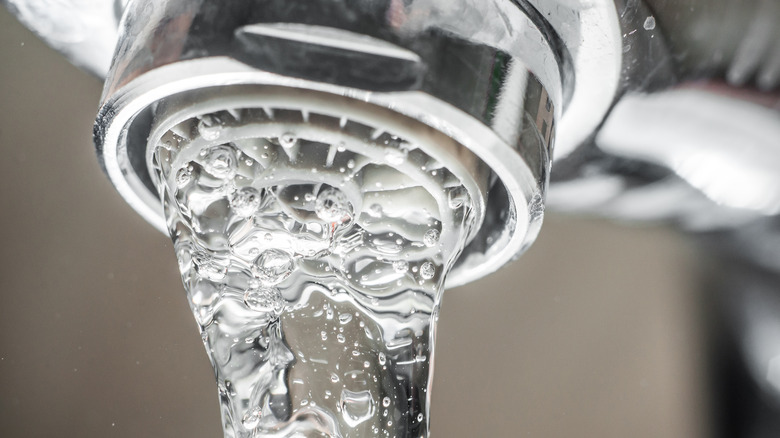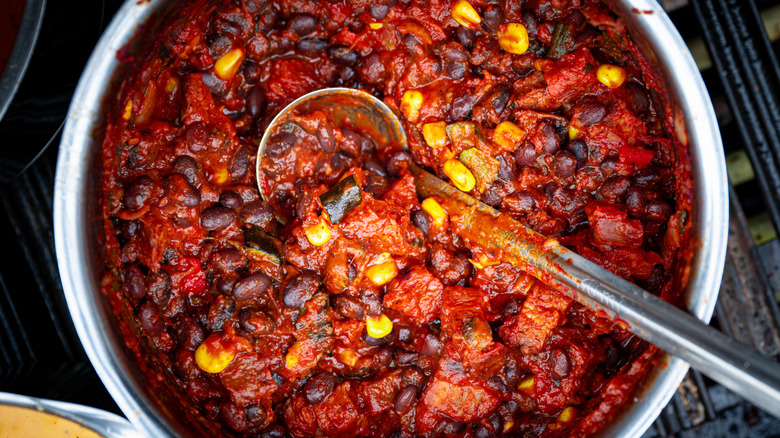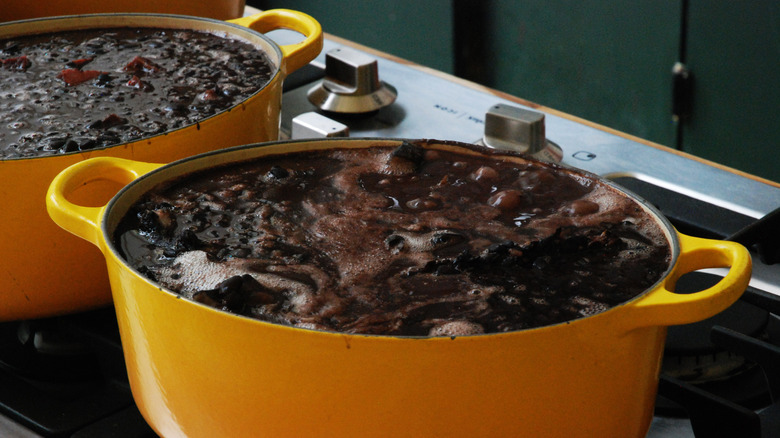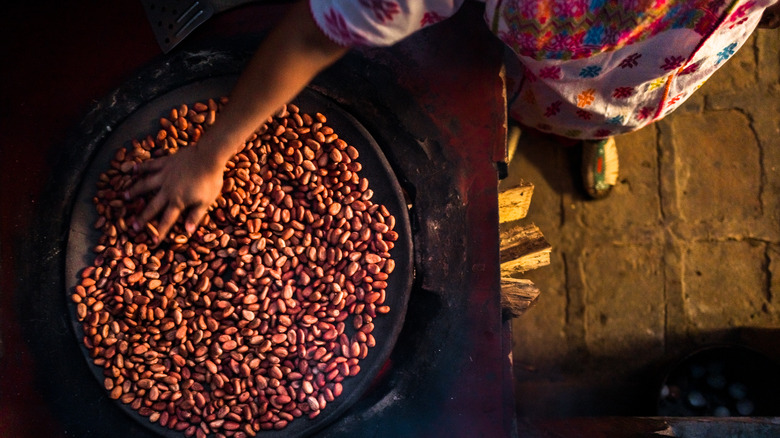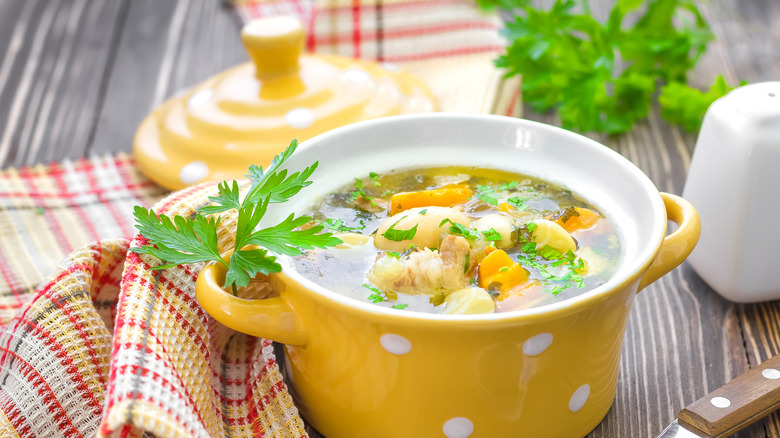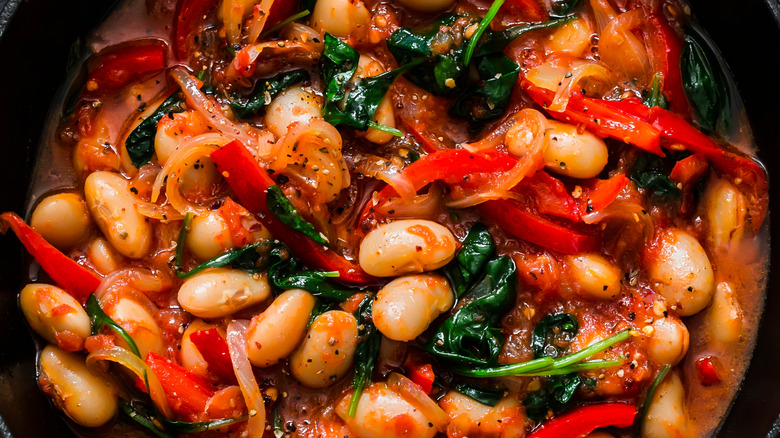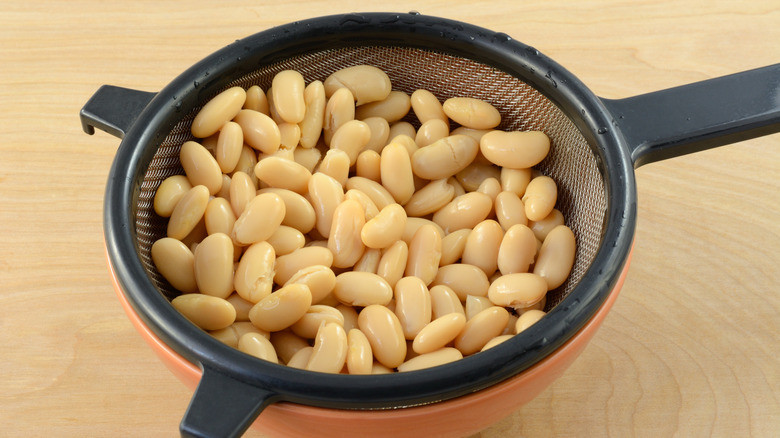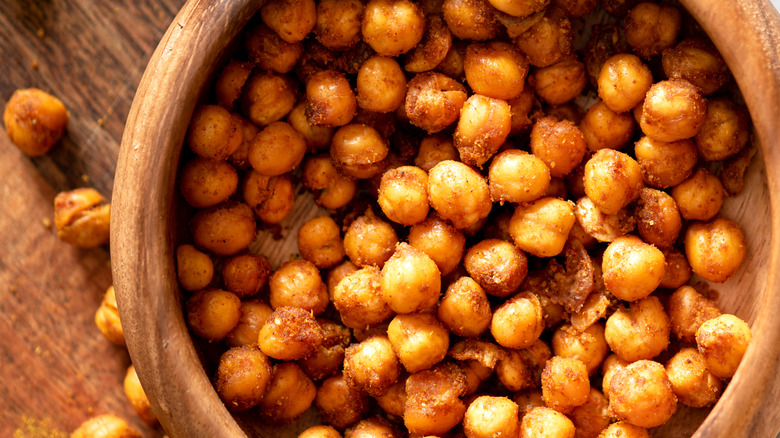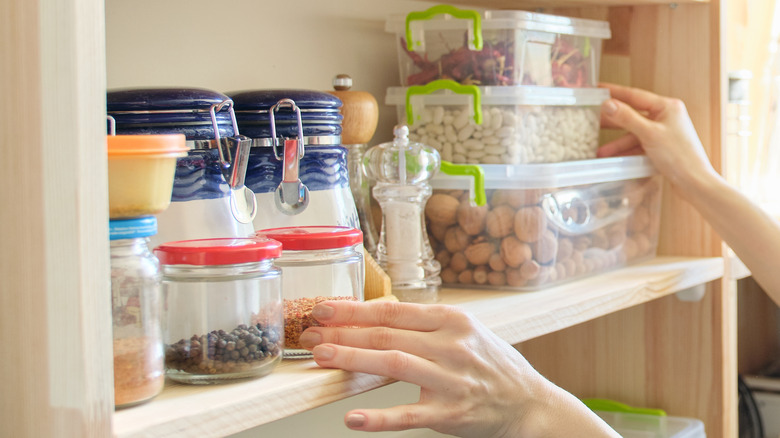Mistakes Everyone Makes When Cooking With Beans
Beans, beans, the magical fruit, the more you eat, the more you... No, no hear us out! Beans are versatile legumes that can be used in many types of recipes. We happen to love them in any way, shape, or form. From Avocado Hummus to Baked Beans, beans are our favorite way to enjoy easy, delicious, plant-based protein. Outside of their high protein content, beans are also great sources of other nutrients including fiber, antioxidants, and B vitamins, according to Healthline.
Additionally, beans are incredibly affordable, whether you purchase them dried or canned. One 15-ounce can of beans at Walmart sells for $0.54, while a pound of dried beans sells for as low as $1.14. Needless to say, we are bean fans. With that kind of nutritional profile and price point, how could we not be?
Are you looking to incorporate more beans into your diet? We typically will use canned beans in our recipes because they are so incredibly easy. Whether you are using canned beans or cooking dried ones, there are a few things you need to know in order to circumvent some common pitfalls. Here are several common mistakes when cooking with beans that can be easily avoided — and don't worry, we'll also give you tips on how to avoid these errors. You'll become a bean-cooking pro in no time.
Not cleaning beans
One big mistake that most people make when cooking their own dried beans is not cleaning the beans first. You probably already drain and rinse your canned beans, but you need to rinse those dried beans before cooking them as well.
According to the Bean Institute, to properly clean those beans, you need to start by placing the beans in a shallow pan in order to clearly evaluate them. Then, pick out any debris that you see and discard it. It's not uncommon to find rocks, twigs, or even leaves in your beans, and we bet you weren't expecting that! Afterward, you can go ahead and pour the remaining beans into a colander and give them a good rinse with running water. This will shake off any excess dirt — it's nature, after all. Think of it this way: you would wash your produce, so make sure to wash your beans.
Not pre-soaking beans
When cooking with dried beans, it's important to soak the beans before cooking. According to Spend With Pennies, soaking the beans helps them cook faster and can make them easier to digest. If you have ever tried to cook dried beans without presoaking them first, you've likely realized they can take a lifetime to become tender.
But how do you soak the beans? Per Spend With Pennies, there are two ways — the first way involves soaking the beans overnight. You start by filling a stockpot with beans and covering it with at least 2 inches of fresh water. Cover the stockpot with a lid and then let the beans sit overnight. The second way to soak beans is called the quick soak. This method involves placing the beans in a stockpot and covering them with water. Bring the water to a boil and then remove them from the heat, cover them with a lid, and let them stand for 1-4 hours. With both methods, be sure to strain the beans first when you begin cooking.
Cooking with the wrong equipment
According to The Prepared, the best equipment to use when cooking dried beans is a pressure cooker, like an Instant Pot. We happen to agree, as this pressure cooker will cut down the cooking time of the beans significantly. If you don't have an Instant Pot, don't fret — you can also cook them in a pot on the stovetop.
If you're cooking in the Instant Pot, place the dried beans in the inner pot and cover them with water. Close the lid and place the valve on sealing. Then, pressure cook the beans on high for around 90 minutes. Be sure to allow the Instant Pot to slowly release pressure.
If you're cooking beans on the stovetop, place the dried beans in a pot and cover them with water. Bring the water to a boil and then lower it to a simmer. Simmer them for about 2-3 hours, depending on the type of bean. Be sure to stir regularly and be ready to add more water if necessary.
Cooking with hard water
We bet this one will surprise you — did you know that we often have hard water running in our taps? Hard water contains calcium, and when it's used to cook beans, it makes it hard for the beans to soften, per The Kitchen Table By White. Why does this happen? Well, according to The Kitchen Table By White, under normal conditions, the beans soften when cooked because of a conversion of pectin within the beans. However, when calcium is in the water, the calcium prevents the pectin conversion, causing the beans to remain hard, even after cooking for hours.
Instead of cooking with hard water from our taps, seek out another water source, such as purified drinking water from a filter. As a note, you should also avoid cooking with chlorinated water. Per Food Revolution, the cancer risk is significantly increased for those who drink water contaminated with chlorine.
Overcooking
Another common mistake that people make when cooking beans is overcooking them. According to Home Cook World, overcooked beans can become flavorless, mushy, and pasty. Overcooking your beans can even lead to a loss of nutrients found within the beans and poorer digestion of the beans, per Home Cook World.
So, how can you avoid overcooking your beans? If cooking using the stovetop method, be sure to test the texture of the beans as you are cooking. By stirring the beans and using a spoon to mash some beans against the side of the stockpot, you can test the firmness of them. If needed, you can even taste test a bean to check the doneness. An undercooked bean will be chalky and firm, while an overcooked bean will be pasty and mushy. A perfectly cooked bean will be tender upon biting. While this sounds complicated, we promise you'll get the hang of this.
Undercooking
While overcooking beans is a common mistake, undercooking beans is also a common mistake. However, with undercooking beans, you not only run the risk of having less tasty beans, but you may also risk some health concerns, according to Wild Oats. Per Healthline, Uncooked beans contain lectins, which are a type of protein that can pass through a human digestive tract without change, because they are resistant to our digestive enzymes. While lectins are not usually a great cause for concern, there are a few exceptions. In raw kidney beans, for example, are toxic lectins called Phytohaemagglutinin, according to Healthline. If raw kidney beans are consumed, one may experience kidney bean poisoning which can lead to gastrointestinal distress, via Wild Oats.
This is why it is so important to cook your dried beans thoroughly. To ensure you are cooking your beans thoroughly, be sure to cook them according to the package directions and cook them long enough.
Not enough liquid
Similar to the importance of soaking your beans, you'll also want to make sure that you are cooking beans with enough liquid. Beans are tough as a rock when dry. The liquid is crucial at many stages of the cooking process in order to get them to soften enough to be edible.
As you are cooking your beans using the stovetop method, some of the cooking liquid will evaporate, while some will be absorbed by the beans. According to Serious Eats, it's crucial to keep an eye on the amount of cooking liquid left in the pot as you go. Once you see the water level dropping, add in some fresh water to the pot. This will ensure that the beans cook thoroughly and don't burn. While there are many charts displaying water to bean ratios and cooking times, each batch of beans may be slightly different. Because of this, it's best to keep an eye on them as they cook.
Not adding aromatic flavors
When cooking dried beans, you'll notice that beans are rather bland in taste. They can be a bit earthy and nutty, but mostly they are quite boring in flavor. However, we want to challenge you to think of them as a blank slate, as you can easily infuse various types of seasoning into beans through the cooking process. This makes them incredibly versatile, fitting in nicely with several types of cuisines, such as Mexican, Indian, French, English, and even Chinese.
According to Bon Appetit, you should seek out flavorful aromatics and herbs like onions, shallots, garlic, chiles, rosemary, sage, bay leaves, and thyme when cooking beans. Go ahead and add them directly to the cooking liquid when simmering. Along the same lines, be sure to add salt to ensure the beans will be bursting with flavor when cooked. Finally, remove the aromatics once you're finished cooking.
Adding acidic ingredients
We'll admit it — we've made this mistake before, and maybe you have as well. Be sure to avoid adding acidic ingredients to your cooking liquid when cooking dried beans. It's best to stay away from the use of acidic ingredients because the acid can prevent the beans from softening. Per Camellia Brand, this happens because the acid reacts to the starches within the beans and blocks the normal swelling that occurs during cooking. According to The Spruce Eats, the acid binds to the beans' coat and makes them water-resistant, preventing them from absorbing liquid and softening.
That means lemon juice, tomatoes, vinegar, wine, and other acidic ingredients should not be added to beans, unless you add them once the beans are already cooked and softened. If you add them too early in the cooking process, you run the risk of the beans never cooking and softening up.
Not rinsing canned beans
While most of our tips above have involved dried beans, this one is about canned beans. We'll be honest — we use canned beans most of the time, since we often do not want to embark on the long journey of cooking beans from their dried state.
However, one mistake people often make when using canned beans is not rinsing them. It's best to pour the can of beans into a colander, drain the canning liquid from the beans, and give them a good rinse before cooking with them. This not only helps to wash away the starchy liquid, but can also greatly reduce the sodium content of canned beans. According to The Bean Institute, in a 2009 study conducted by the University of Tennessee, Knoxville, researchers found that by draining and rinsing canned beans, one can remove an average of about 41% of the sodium. This is great news for anyone watching their sodium intake.
Not drying beans before roasting
As you've likely noticed, roasted garbanzo beans served as a crunchy snack are all the rage. Whether you are roasting your beans after you cooked them from dried or you simply used canned, there is one mistake you are likely making: not drying them off. This is a crucial step to ensure that the beans get nice and crispy.
To make sure that they are fully dry, according to Fountain Avenue Kitchen, it's necessary to drain the beans, and then rest them on several layers of paper towels. Pat them dry, and allow them to sit for upwards of several hours to dry even further. Alternatively, you can store the beans in the fridge in an airtight container. They will continue to dry out in the fridge. If the beans are not fully dry, they might not get crispy and may even burst in the oven due to the excess moisture.
Using old dried beans
If you are anything like us, you keep a variety of shelf-stable goods in your pantry for a rainy day, but how often do you really go through the pantry and throw out the things that have gone bad? Dried beans may seem to be everlasting, but unfortunately, they eventually are no longer consumable.
According to Good Housekeeping, it's best to use these dried beans before they reach the 2-3-year mark. At this point, the nutritional content of the beans will start to decline, and at 5 years, all nutrition is pretty much gone. If you don't remember the date when you purchased the beans, you are probably fine to cook with them, but first check to see if the dried beans have a strong odor, contain visible bugs, or mold — in these cases, you should discard them immediately. In a perfect world, it's best to use up the beans in the first year of storage.
